Summary functions in google sheet
Summary Functions in Google Sheet
Quoting OpenOffice.org 3.x Calc Guide “Formulas are equations using numbers and variables to get a result. In a spreadsheet, the variables are cell locations that hold the data needed for the equation to be completed. A function is a predefined calculation entered in a cell to help you analyze or manipulate data in a spreadsheet. All you have to do is add the arguments, and the calculation is automatically made for you.”
Google sheet includes 494 functions in 16 types (categories). Common types are date, financial, logical, lookup, text, statistical and some google specific types like google which contains GOOGLETRANSLATE function to translate text from one language into another.
There are around 135 statistical built-in-functions available in google sheets, and if you think none is for you, you can create one (not the scope of this blog, may be some other time…). In this blog we are going to cover group of functions used in summarizing the data and one must be familiar while using spreadsheets. The group includes SUM, COUNT, AVERAGE, MAX, MIN, & MODE applied on numerical data.
Before going for formulas, few words on entering formulas…
- all formulas need to be started with one of the following symbols: =, + or -. Anything else will be treated like a text.
- Each cell has the unique address and referred by its position in the grid (columns & rows).
A2refers to column A, second row in the grid. - You can enter formula in two ways, either directly into the cell itself, or at the input line.
- Depending upon the kind of person you are (in using the computer), while selecting range either you can use mouse or if you are like me which prefers keyboard, range can be written as
start:endfor e.g to select cellA1to cellA10, we can writeA1:A10directly into formula. - When you start typing function, google sheet try to help you out by suggesting the appropriate name of the function, press ↑ and ↓ to navigate and press TAB to accept. Also it will show you the arguments it takes to provide you the output.
SUM
The title for ‘most used function’ in spreadsheet category undoubtedly goes to SUM function.
Syntax
SUM(value1, [value2, ...])
value1 - The first number or range to add together.
value2, ... - [ OPTIONAL ] - Additional numbers or ranges to add to value1.
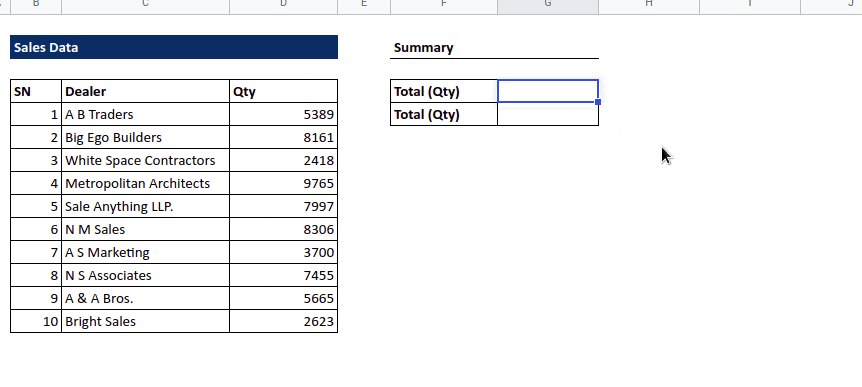
Figure 1: SUM function
COUNT
Syntax
COUNT(value1, [value2, ...])
value1 - The first value or range to consider when counting.
value2, ... - [ OPTIONAL ] - Additional values or ranges to consider when counting.
COUNT function returns the number of numeric values in a dataset. It ignores the text values.
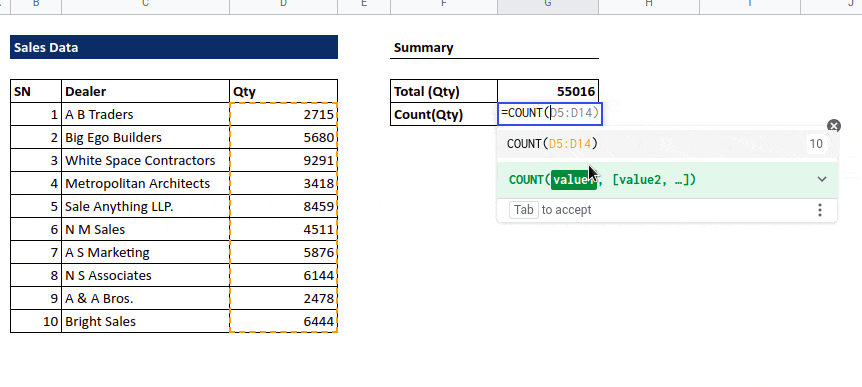
Figure 2: COUNT function
COUNTA
To count all values including text, zero-length strings and whitespace, use COUNTA function.
Syntax
COUNTA(value1, [value2, ...])
value1 - The first value or range to consider when counting.
value2, ... - [ OPTIONAL ] - Additional values or ranges to consider when counting.
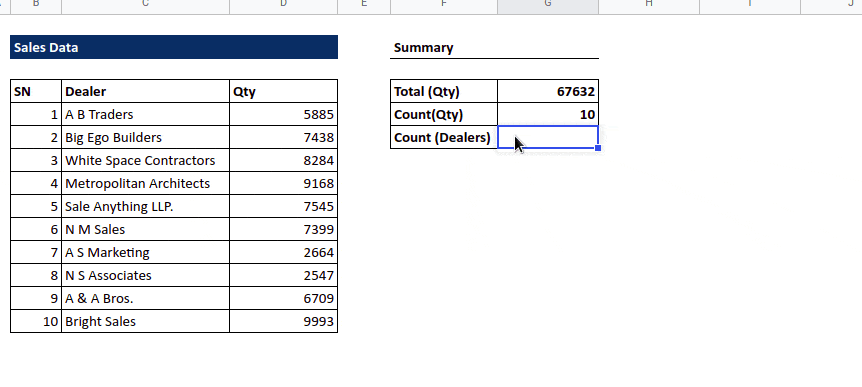
Figure 3: COUNTA function
Other functions related to Count
COUNTUNIQUE
Above mentioned count functions doesn’t care about duplicate values, if you want to count unique values only, use COUNTUNIQUE…
-
Syntax
COUNTUNIQUE(value1, [value2, ...]) value1 - The first value or range to consider for uniqueness. value2, ... - [ OPTIONAL ] - Additional values or ranges to consider for uniqueness.
COUNTBLANK
returns the number of empty cells in a given range.
-
Syntax
COUNTBLANK(value1, [value2,...]) value1 - The first value or range in which to count the number of blanks. value2 - [OPTIONAL ] - Additional values or ranges in which to count the number of blanks.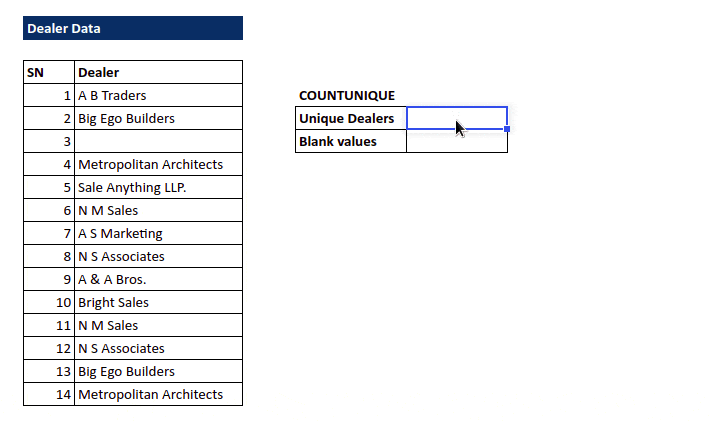
Figure 4: Other count functions
AVERAGE
The average function returns the numerical average (arithmetic mean) value in a dataset, ignoring text.
Syntax
AVERAGE(value1, [value2, ...])
value1 - The first value or range to consider when calculating the average value.
value2, ... - [ OPTIONAL ] - Additional values or ranges to consider when calculating the average value
To have text values considered as 0 values, use AVERAGEA
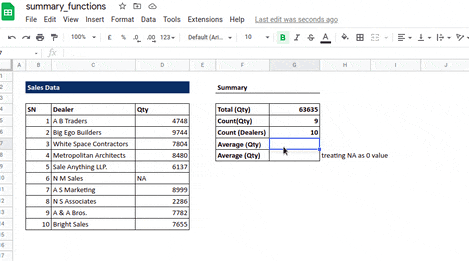
Figure 5: AVERAGE function
MEDIAN
The median function finds the median or middle value in a list/range of numbers.
Syntax
MEDIAN(value1, [value2, ...])
value1 - The first value or range to consider when calculating the median value.
value2, ... - [ OPTIONAL ] - Additional values or ranges to consider when calculating the median value.
- Any text encountered in the value arguments will be ignored.
MEDIANreturns the middle value if odd number of value arguments are given. With an even number of values, it gives average of two middle values.- It ignores empty cells but not ones containing the numeral 0.
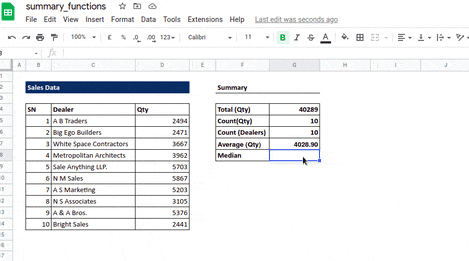
Figure 6: MEDIAN function
MODE
Returns the most commonly occurring value in a dataset.
Syntax
MODE(value1, [value2, ...])
value1 - The first value or range to consider when calculating mode.
value2, ... - [ OPTIONAL ] - Additional values or ranges to consider when calculating mode.
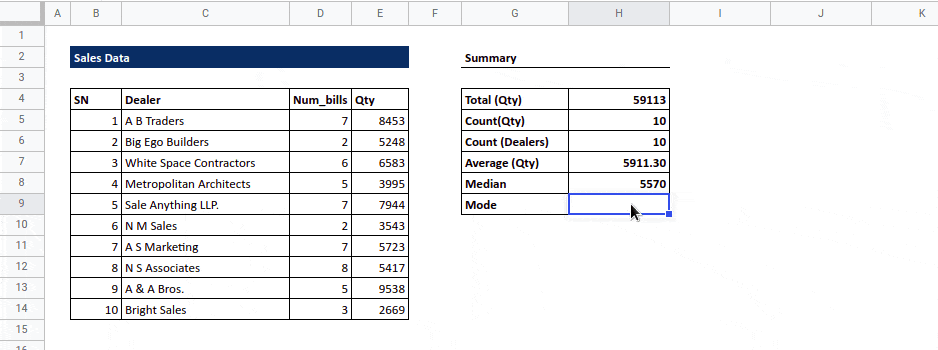
Figure 7: MODE function
MAX
Returns the maximum value in a numeric dataset.
Syntax
Syntax
MAX(value1, [value2, ...])
value1 - The first value or range to consider when calculating the maximum value.
value2, ... - [ OPTIONAL ] - Additional values or ranges to consider when calculating the maximum value.
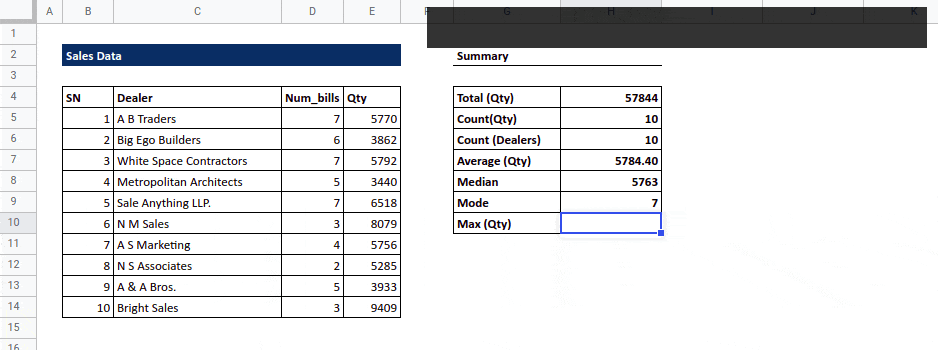
Figure 8: MAX Function
MIN
Returns the minimum value in a numeric dataset.
Syntax
MIN(value1, [value2, ...])
value1 - The first value or range to consider when calculating the minimum value.
value2, ... - [ OPTIONAL ] - Additional values or ranges to consider when calculating the minimum value.
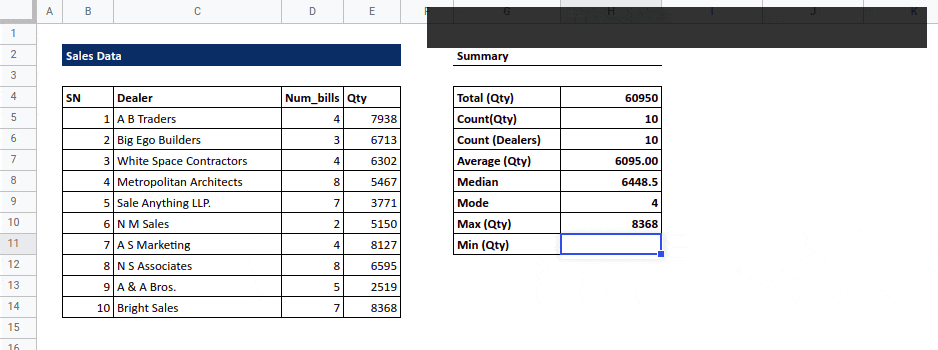
Figure 9: MAX Function
